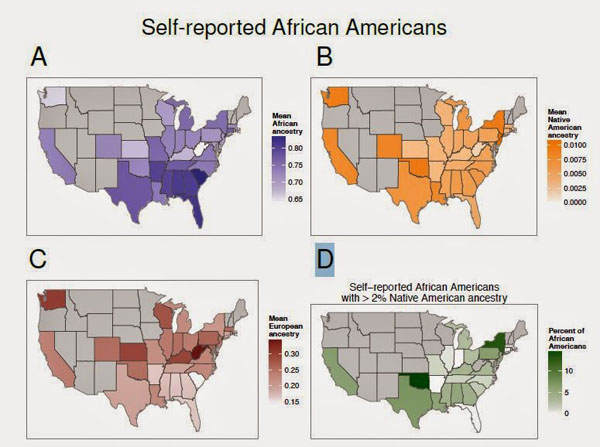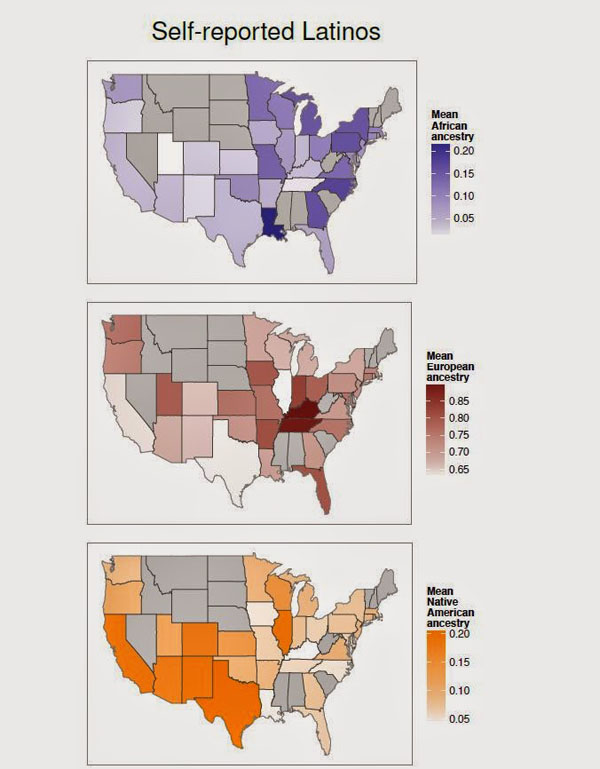23andMe Mega-Study on Different American Groups
Dienekes, September 23, 2014
It’s great to see that the massive dataset of 23andMe was used for a study like this that seeks to capture the landscape of ancestry of different American groups.
First, distribution of ancestry in African Americans:
The higher fraction of African ancestry in the south and of European ancestry in the north, shouldn’t be very surprising. {snip}
Second, distribution of ancestry in “Latinos”:
bioRxiv doi: https://dx.doi.org/10.1101/009340
The genetic ancestry of African, Latino, and European Americans across the United States.
Katarzyna Bryc, Eric Durand, J Michael Macpherson, David Reich, Joanna Mountain
Over the past 500 years, North America has been the site of ongoing mixing of Native Americans, European settlers, and Africans brought largely by the Trans-Atlantic slave trade, shaping the early history of what became the United States. We studied the genetic ancestry of 5,269 self-described African Americans, 8,663 Latinos, and 148,789 European Americans who are 23andMe customers and show that the legacy of these historical interactions is visible in the genetic ancestry of present-day Americans. We document pervasive mixed ancestry and asymmetrical male and female ancestry contributions in all groups studied. We show that regional ancestry differences reflect historical events, such as early Spanish colonization, waves of immigration from many regions of Europe, and forced relocation of Native Americans within the US. This study sheds light on the fine-scale differences in ancestry within and across the United States, and informs our understanding of the relationship between racial and ethnic identities and genetic ancestry.


















